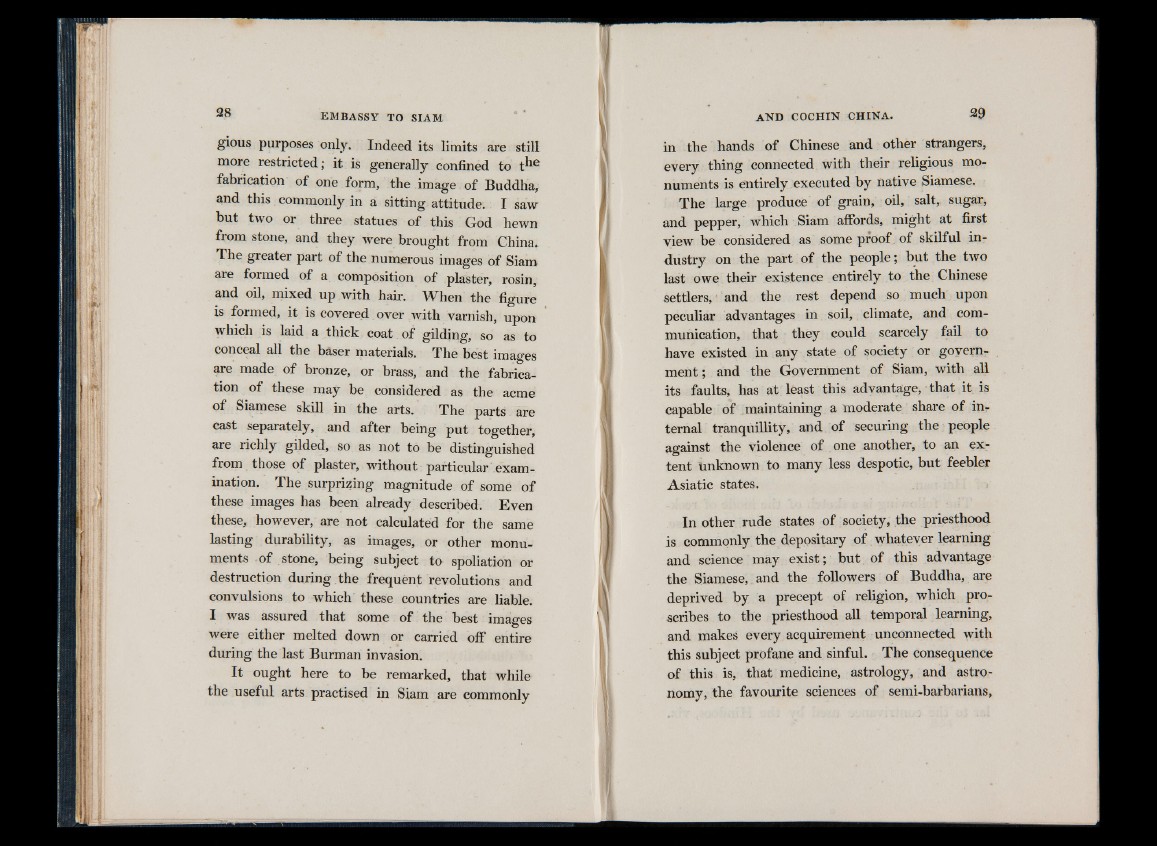
gious purposes only. Indeed its limits are still
more restricted; it is generally confined to t^e
fabrication of one form, the image of Buddha,
and this commonly in a sitting attitude. I saw
but two or three statues of this God hewn
from stone, and they were brought from China»
The greater part of the numerous images of Siam
are formed of a composition of piaster, rosin,
and oil, mixed up with hair. When the figure
is formed, it is covered over with varnish, upon
which is laid a thick coat of gilding, so as to
conceal all the baser materials. The best images
are made of bronze, or brass, and the fabrication
of these may be considered as the acme
of Siamese skill in the arts. The parts are
cast separately, and after being put together,
are richly gilded, so as not to be distinguished
from those of plaster, without particular examination.
The surprizing magnitude of some of
these images has been already described. Even
these, however, are not calculated for the same
lasting durability, as images, or other monuments
of stone, being subject to spoliation or
destruction during the frequent revolutions and
convulsions to which these countries are liable.
I was assured that some of the best images
were either melted down or carried off entire
during the last Burman invasion.
I t ought here to be remarked, that while
the useful arts practised in Siam are commonly
in the hands of Chinese and other strangers,
every thing connected with their religious monuments
is entirely executed by native Siamese.
The large produce of grain, oil, salt, sugar,
and pepper, which Siam affords, might at first
view be considered as some proof, of skilful industry
on the part of the people; but the two
last owe their existence entirely to the Chinese
settlers, ' and the rest depend so much upon
peculiar advantages in soil, climate, and communication,
that they could scarcely fail to
have existed in any state of society or government
; and the Government of Siam, with all
its faults, has at least this advantage, that it is
capable of .maintaining a moderate share of in*
ternal tranquillity, and of securing the people
against the violence of one another, to an extent
unknown to many less despotic, but feebler
Asiatic states.
In other rude states of society, the priesthood
is commonly the depositary of whatever learning
and science may exist; but of this advantage
the Siamese,^and the followers of Buddha, are
deprived by a precept of religion, which proscribes
to the priesthood all temporal learning,
and makes every acquirement unconnected with
this subject profane and sinful. The consequence
of this is, that medicine, astrology, and astronomy,
the favourite sciences of semi-barbarians,